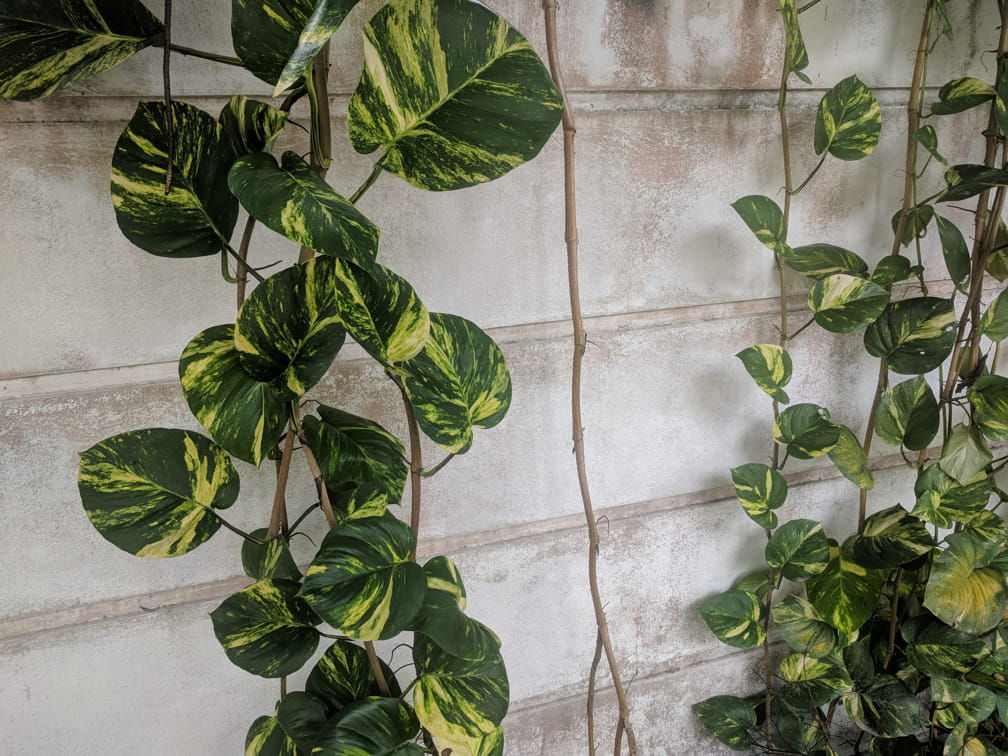Houseplants have soared in popularity in recent years, due perhaps to the increase in people working from home and wanting something to spruce up their offices. That’s not to mention the rise in houseplant-themed TikTok and Youtube accounts. No longer just the dusty spider plant clinging to life on your aunt’s window sill, houseplants have become a must-have household accessory.
Houseplants come in all shapes, sizes, and even colours. Taking up room that used to be dominated by flowers in supermarkets, you can pick up your first houseplant as easily and as cheaply as you would milk. But while they often look pristine and perfect in the shop, they can begin to look a bit peaky once they’ve been in our homes for a while.
There are many mistakes beginners make when keeping houseplants, but don’t fret. In this short guide, we cover the most common issues and how to resolve them so you can create the jungle home you’ve dreamed of.
Beginner Plants
Common Mistakes
Here are five easy mistakes to make when beginning your journey in plant keeping, and how to fix them.
Watering Woes
Everyone knows that plants need water. But it can be tricky to know just how much, and how frequently, they need it. A succulent or cactus will need water much less frequently than a spider plant, which in turn might need it less frequently than a peace lily. It’s crucial to know from the off just how much water plants need and when to give it to them.
Plants in supermarkets come in two states; bone dry, or wet through. To find one that has been perfectly watered is like finding The Loch Ness Monster. If you give in to temptation and pick up a plant during your weekly shop, one of the quickest and easiest ways to help it is to see if the soil is dry or soggy.
If it’s dry, pop it in a bowl with a few centimetres of water and let it have a drink. If it’s damp, leave it be. If it’s absolutely drenched, stick a tampon into the soil to remove excess water. Honestly! Keeping the soil too soggy, for most plants, can cause the roots to rot.
Pest Predicaments
Ideally, you’d check for pests in the shop and, if you see any, put the plant back on the shelf. But these tiny bugs can be sneaky and may not make themselves known right away. Keep a lookout for sad-looking leaves; leaves that droop or look damaged. You can also look for the pests themselves– these can be small flies (fungus gnats), little fluffy grey/white things (mealybugs), or even tiny little dots (thrips).
Another sign of pests can be webbing, like a spider’s web but even finer, particularly on or around new leaves. This is a sign of spider mites. These are incredibly small, but if you look closely you might be able to see them crawling around on the plant itself and on the web they have made. If you spot any of these signs, it’s best to move your plant away from any other plants you own, to prevent spread. Give the infected one a blast in the shower, treat it with some form of pesticide, and leave it in quarantine until all the bugs are gone.
Lighting Lamentation
The impulse can be strong to stick your new plant straight on the windowsill and for some plants that would be fine to do. But other plants, such as the peace lily, wouldn’t take kindly to such a sunny situation.
Many of the traditional houseplants in this country originate in forests and jungles and are made for growing in dappled light or shadow. Other plants, such as succulents, love being in the sun but are often placed on shelves or bookcases along with the other ornaments.
A safe bet is to place your plant in bright, indirect light until you find out what sort of situation it would prefer. This means the plant will be in an area that is bright and well-lit but does not have any direct beams of sunlight. Just like ourselves, plants can get sunburn!
Potting Problems
Many houseplants come in simple, brown, boring plastic pots. With so many cute, decorative pots on the market, we can be tempted to get our fingers dirty and move our plants from the boring pots into shiny, new, beautifully painted ceramic ones.
These pots, while lovely, make it almost impossible to water your plants properly and offer no drainage for excess water. Instead, think of these ceramic pots as liners to cover the plastic pots. Even so, if you decide to water your plant from the top, make sure there is no standing water at the bottom afterwards. Standing water in the pot can cause root rot and encourage fungus gnats.
Toxicity Troubles
This problem is less about the plant itself and more to do with the effect it can have on those around it. Many of the beautiful houseplants that hop into our shopping trolleys are toxic to some degree and some can have lasting, damaging effects.
If you have little ones who are exploring their world, or furry four-footed ones that love to munch plants, it’s important to know which plants must be kept out of reach and what to do in the worst-case scenario. For example, Dieffenbachia is a beautiful species of plant with big, green and white patterned leaves. It is also known by the common name “Dumb Cane” because when chewed it can render a person unable to speak. This is caused by the sap, which contains calcium oxalate, and it can also be very damaging to the skin.
If in doubt, it’s always best to handle plants with care, gloves and to keep them away from children and animals.
Beginner Plants
Here are five plants that are suitable for any beginner. Forgiving and adaptable, these plants will bounce back from almost any rookie mistake.
1. Tradescantia Zebrina
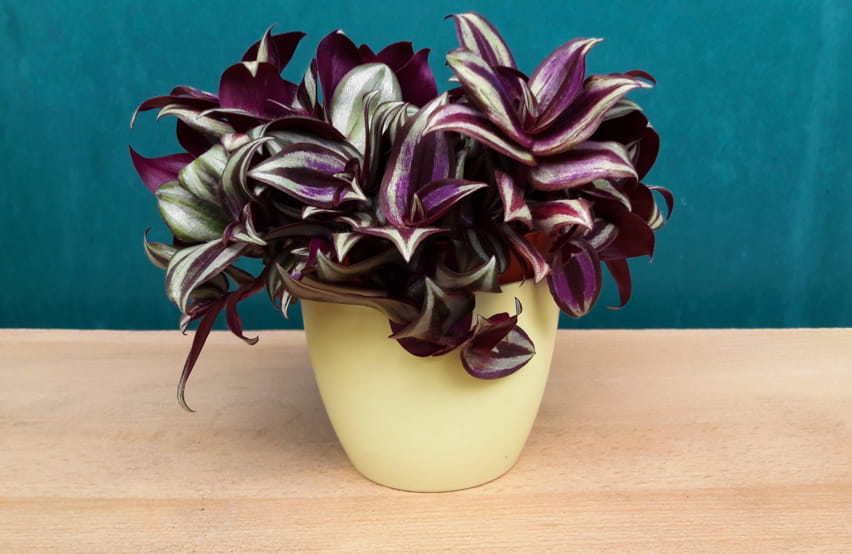
Photo credit: LMC1905 / Shutterstock
This classic houseplant has gone by many common names. Inch plant, radiator plant, whatever you call it— it is a beautiful plant that grows quickly. The sparkling silver and green leaves have rich purple backs, making Tradescantia Zebrina a striking plant to behold.
Place on a bright, sunny windowsill and water when the soil is dry and it will grow and thrive. This plant is also exceptionally easy to propagate— snip off any cuttings you want, stick the cut end in some soil, and a new plant will grow quickly and easily.
2. Sansevieria Laurentii
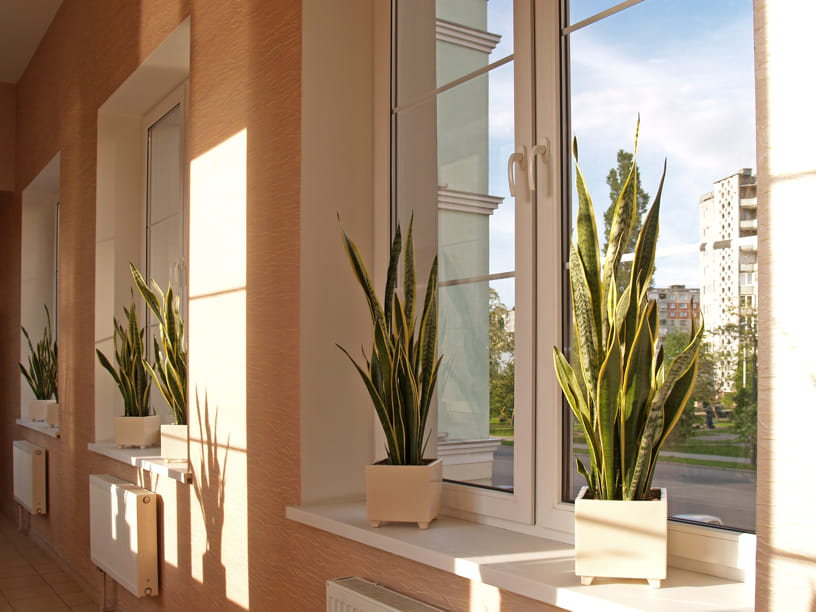
Photo credit: Irina Borsuchenko / Shutterstock
Also known as Snake Plant, mother-in-law’s tongue, and Saint George’s sword, Sansevieria Laurentii is a stunning plant. Sharp points outlined in vibrant yellow, it has long been a living room favourite.
It is a forgiving plant, existing in almost any location without protest. When placed on a sunny window sill, however, Sansevieria Laurentii will gift you with baby plant offshoots emerging from the soil and even small flowers.
3. Epipremnum Pinnatum "Aureum"
Photo credit: sharohyip / Shutterstock
Pothos is one of the most popular families of houseplants and it’s easy to see why. Quick growing, very forgiving and they come in a beautiful array of colours and patterns. Golden pothos is especially popular, with its rich green and creamy white mottled leaves.
Like tradescantia, pothos is easy to propagate but doesn’t require the bright sunlight of a Tradescantia. Medium to bright/indirect light will see this plant thrive. It can grow up, clinging to moss poles and walls like ivy, but is also attractive grown as a hanging plant.
4. Chlorophytum Comosum
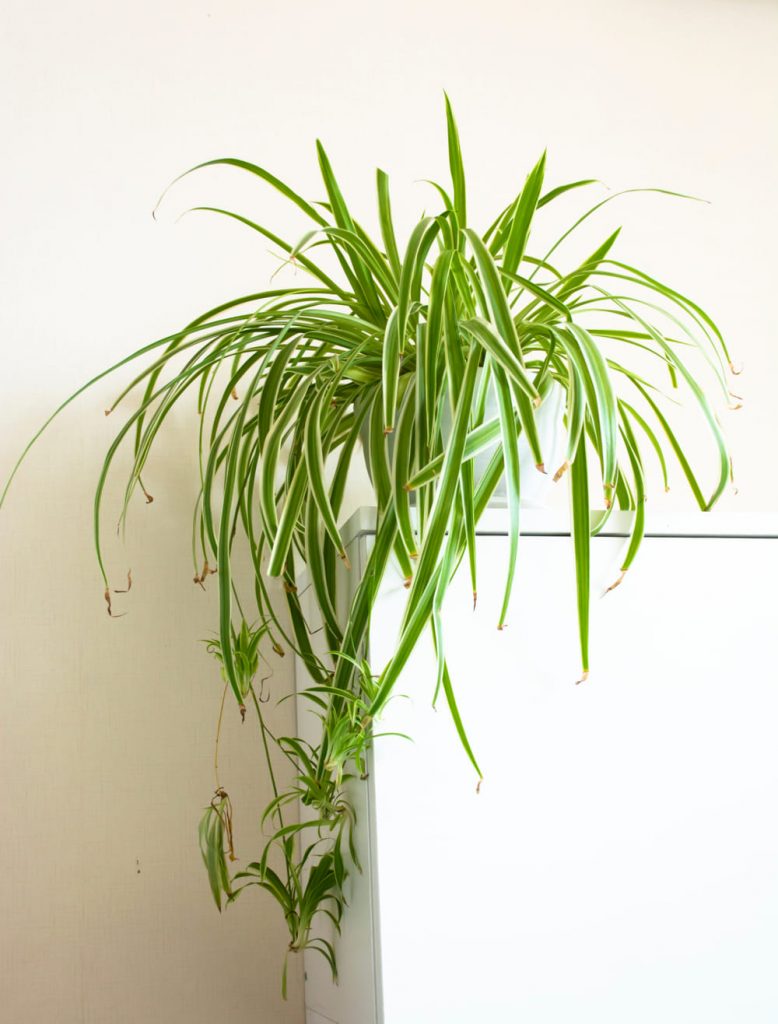
Photo credit: Uuganbayar / Shutterstock
Most commonly known as “spider plant”, Chlorophytum Comosum is a houseplant staple. Many of its cousins share this common name, and a lot look very similar. Some small variations in colour, pattern— one even has curly stems, but for the most part, the care is the same.
As long as Chlorophytum gets some light, and gets watered every couple of weeks, it will be happy. With greater light levels, though, you increase your chance of it flowering and, in turn, making baby spider plants on long stems that dangle elegantly down. Once these have grown for a while, they can be removed and planted in their own pot. These cute little babies make great gifts or can just spread your planty decor to another room in the house!
5. Zamioculcas Zamiifolia
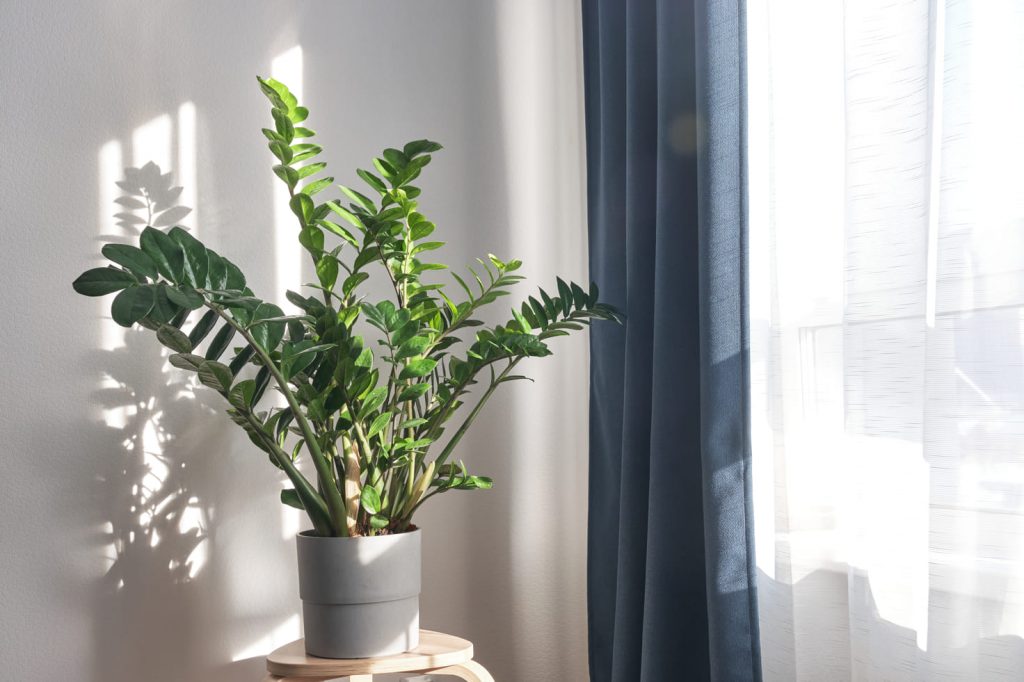
Photo credit: Elena Shashkina / Shutterstock
More commonly known as a ZZ plant, Zamioculcas Zamiifolia is a hardy foliage plant with a lot to offer. Tolerating drought well and not minding low light, the ZZ plant will forgive almost any mistake. The vibrant green, pointed leaves and a height maximum of around 3 feet, Zamioculcas Zamiifolia fit in well in almost any room.
While you can make them happiest in bright, indirect light and watering once the soil is completely dry, they rarely show any ill effects. So long as you do water them occasionally and they get some light, they will survive happily.
Although it is gorgeous to look at, you must remember to wash your hands after touching a ZZ plant and keep them out of reach of children and pets as they are somewhat toxic.

